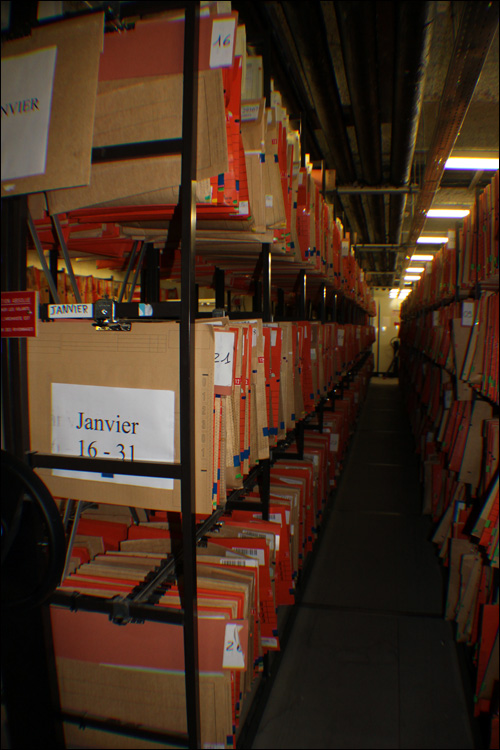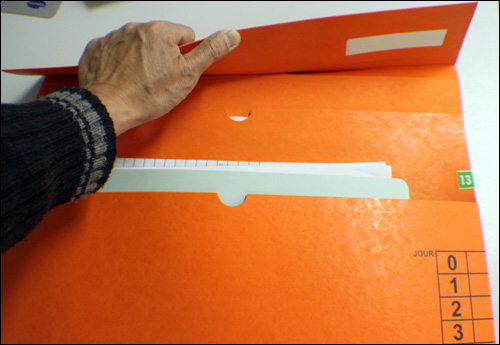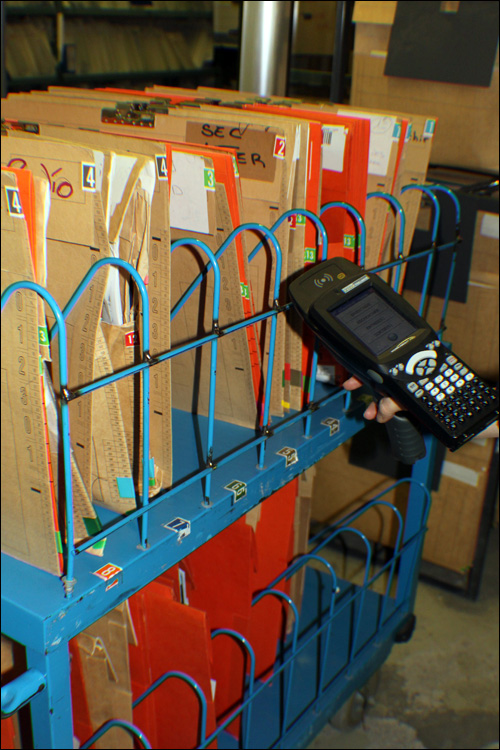Following several years of applying EPC Gen 2 passive RFID tags to medical records and using handheld readers to locate those documents, the medical information department of Bassin de Thau Hospital, in the city of Sète, France, plans to soon begin expanding the solution to include a dozen fixed RFID portals that will read the tags of files passing from one wing to another. In that way, the hospital will know in which department a given patient’s files are located at any particular time, and staff members can then employ a handheld reader to quickly locate that folder.
The installation of fixed portals throughout the hospital will further reduce the number of labor hours previously required to locate missing files, says Nhut Truong-Minh, the head of Bassin de Thau Hospital’s medical information department. Already, he reports, by employing software to track when a file is removed, and then using the handheld to find it, the facility has reduced search times for files from half a day to—in some cases, if a folder is still within the medical information department area—a matter of minutes.

The technology, provided by systems integrator Frequentiel and paper archive management company Lamap, uses Tageos EOS-500 passive ultrahigh-frequency (UHF) labels, Motorola Workabout Pro handheld readers, a deister electronic UDL5 desktop RFID reader connected to a PC workstation, and Frequentiel middleware that interprets RFID read data and forwards it to the hospital’s existing records-management software. Lamap, which was the paper file vendor for the hospital, initially embedded the Tageos tags within its files. Now, however, staff members attach a Tageos adhesive paper RFID label to each file’s folder.
The 823-bed hospital stores medical patient records within a single central location, one for each patient who is being or has been treated at the facility. On a typical day, health workers request a total of between 50 and 85 files for the patients they treat. Prior to the RFID solution’s deployment, when files were requested, the records staff would scan the bar-coded label attached to each folder before turning it over to a coworker. A member of the records staff would then scan it again once it was returned.
If a file was needed but did not come back when expected, Truong-Minh says, personnel often had to walk throughout the facility—which spans tens of thousands of square meters in size—before locating the missing records. Employees could also place calls—as many as 10—in an effort to track down that file.
With the RFID solution in place, the checking out and returning of files is now faster, Truong-Minh says, and searching for a missing folder is also considerably easier. First, the records department applies a Tageos UHF RFID label to each file. Initially, the system had included file folders with the tags pre-embedded, but Lamap no longer provides such folders, so a worker simply attaches a label to each one. The employee then captures the label’s ID number using the desktop reader, and that data is stored in the hospital’s records-management system, linked to that particular patient’s data.
When files are requested, a worker walks through the hospital’s central archive room, selects the appropriate shelved folders and places them onto a cart. The files are then checked out by passing a handheld Motorola reader over the cart and reading each folder’s ID, thereby creating an electronic record of which items are being removed. The hospital does not create or store records of who checks out files, due to French regulations.
As a new patient record is created, or as one of the 120,000 existing patient records is accessed, all paper documents in the record are inserted into a paper folder that includes an EOS-500 RFID label. More than 40,000 of the 120,000 paper patient records stored within the archive room are now tagged with Tageos RFID labels. Moving forward, the hospital expects to tag 15,000 additional folders annually.
By the end of 2014, Bassin de Thau Hospital intends to complete the installation of Motorola FX7400 fixed RFID reader portals at the entrances to three wings, on each of the wing’s four floors. As a file passes through a portal, the reader will automatically capture the tag’s ID number, and then transmit that information to the software, which will update that file’s location data. In that way, files can be located within a wing before staff members need to begin searching for them.
The system also provides the hospital with analytics regarding files’ movements, Truong-Minh says. This, he explains, enables him to generate a report indicating, for example, how long files remain checked out, how often each department uses those files, or for how long and in what quantity.
In the future, the hospital may also apply RFID tags to its assets, including linens, in order to track their movements throughout the facility. However, no date for that deployment has yet been determined.




